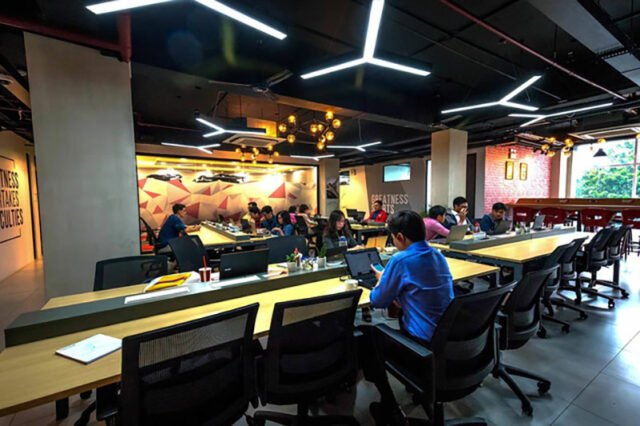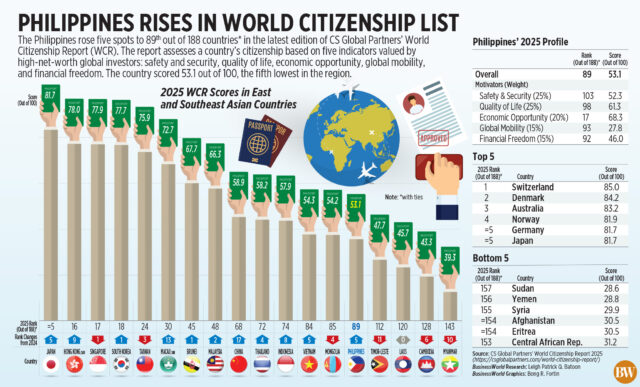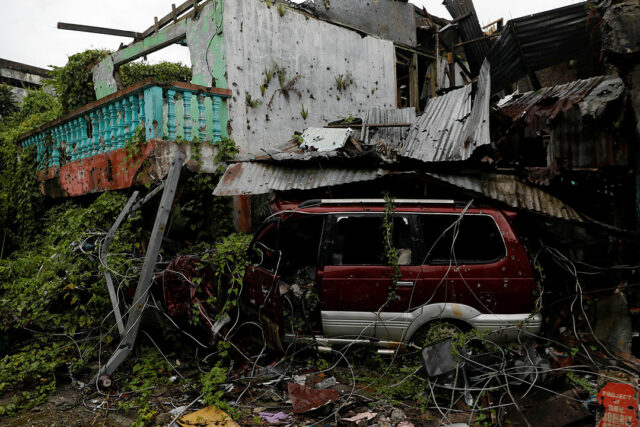IN THE HEART of Singapore, a financial hub where billions of dollars zip around the world over computer screens in nanoseconds, there’s a crowded building where cash still reigns.
Six days a week, hundreds of people line up in a rundown mall abutting Raffles Place square to buy and sell hard currency at one of around 30 money changer stalls. All manner of notes can be had in minutes: Singapore dollars for British pounds? Coming right up. Indonesian rupiah for Vietnamese dong? Icelandic króna? Maldivian rufiyaa? No problem. Some 150 currencies are available.
“Cash will remain forever,” said Abdul Haleem, 65, a veteran of the industry whose kiosk sits at the entrance to the narrow, three-story plaza called The Arcade. The towering offices of global banking giants JPMorgan Chase & Co. and Bank of China Ltd. are just steps away.
The number of licensed money changers in Singapore dropped during the COVID-19 pandemic when many people were unable to travel and retail shops struggled to pay rent. But there are close to 250 physical stalls still operating, and new ones continue to spring up across the city-state’s 284 square miles of land. That’s even though multi-currency payment apps such as YouTrip, Wise and Revolut have grown in popularity.
To understand how so many cash dealers can survive the digital age, you need to know a bit about Singapore’s place in the world. Though it’s now among the richest countries — where financial titans from UBS Group AG to BlackRock, Inc. manage more than $4 trillion and billionaires including James Dyson, Ray Dalio and Sergey Brin have set up family offices — the island nation remains a shipping and transit hub at its core.
Hundreds of vessels anchor in Singapore’s harbor each day, many waiting to load and unload cargo at one of the world’s busiest maritime ports. For decades, that’s made Raffles Place a prime location for money changers, just a few blocks from where the Singapore River empties into the Singapore Strait. Many sailors need to swap cash from their previous locations, and change money for their next destination.
“They get off the boat and come right here,” said Mr. Haleem, whose uncle Abdul Gaffoor, now 99, started City Money Changers on the Arcade’s ground floor in 1980.
OLD-WORLD RELIC
Many office workers also come in search of the best exchange rates — which are often better than what banks offer. It’s an old-world relic resisting the bits and bytes revolution. Mobile phones and tablets have replaced newspapers, while e-mails and social media have supplanted faxes and letters. Now digital payments are coming for the ancient culture of coins and paper notes.
Mohamed Rafik, 55, a partner at Arcade Money Changers, a stall opposite Haleem’s, remains optimistic. His evidence is that there are new licensees entering the industry who wouldn’t do it if they couldn’t make a living.
“Money changers won’t go out of business,” said Mr. Rafik, while handling cash and paper receipts on a busy afternoon. Digital payment wallets may seem attractive now, but the companies also have overheads and may try to increase rates in the long run, he predicted.
Right now, a thriving tourism industry is driving demand during the summer school holidays. Singapore is close to Southeast Asian holiday hotspots like Phuket in Thailand, Vietnam’s Ha Long Bay and Bali, Indonesia, where cash is still needed to pay for food at street stalls or small restaurants, or to offer tips.
Travelers with cash also avoid the higher exchange rates and foreign transaction fees imposed by many credit cards.
LIFE LESSON
For Christina Ng, a teacher in her 40s who came to Mr. Haleem’s stall for Korean won, cash gives a sense of security while traveling. Paying with notes and coins is also a lesson for her three children.
“I want them to learn how to use the cash and do the transaction, so they need to see the physical money,” she said. “We don’t want them to just tap, tap, tap without actually knowing what they’re spending on.”
The money changers are good leading indicators of travel trends. Whereas demand used to be strongest for US dollars and Malaysian ringgit, the Japanese yen is now most sought-after, along with Korean won and Taiwanese dollars, Mr. Haleem said. A record number of tourists have flocked to Japan to visit historic sites, dine on sushi and take advantage of the weakened currency.
At the Arcade, the money changers carve out an existence on the fringes of the multitrillion-dollar global foreign-exchange market. Customers throng the narrow passages to scrutinize buy and sell rates at tightly packed stalls, which are required to post rates on electronic screens.
Frugality gives them an edge against the financial institutions that occupy the opulent towers surrounding Raffles Place, according to Mr. Rafik at Arcade Money Changers. The changers will survive even if digital platforms cut their margins to zero to gain market share, he said.
Congregating in one location attracts more customers, but it also pares margins to the bone. Foreign currency bought at a commercial bank can cost 1% to 4% or more once you factor in a poorer exchange rate and transaction fees.
At City Money Changers, it’s a high-volume, low-margin business where Haleem typically makes fractions of a penny on the dollar in a swap. “Everybody wants to see the best price so they will shop around,” he said, while taking a break from his tiny kiosk.
On Thursday afternoon, Mr. Haleem’s stall was selling the greenback at S$1.2900, versus the S$1.2972 offered by DBS Group Holdings Ltd., Singapore’s largest bank, on its retail app. The cash exchange rate wasn’t as favorable as YouTrip’s rate of S$1.2877 per US dollar.
With all this cash on hand — some changers can turn over S$500,000 ($389,000) a day, he says — you’d expect to see armed guards all over the plaza. Not in Singapore, where violent crime is almost non-existent.
Instead, the stall-holders rely on security cameras — there are some 90,000 across the city — to monitor activity. The dealers are the eyes and ears for each other, on the alert for any suspicious customers.
Regulators have scrutinized the industry in the past, concerned about the potential for money laundering.
In 2016, the Monetary Authority of Singapore (MAS) cited a Raffles Place currency changer, along with other banks, for their roles in the scandal at 1MDB, the Malaysian sovereign wealth fund. The probe revealed inadequate risk management practices at the changer, and failure to identify the beneficial owners of funds.
Money changers are now required to conduct customer due diligence measures for cash transactions exceeding S$5,000, or for those topping S$20,000 where the money is funded from an identifiable source like a bank account. That includes verifying customers’ identities and keeping proper transaction records. The industry poses a “moderate level” of money-laundering threats due to its cash-intensive nature, according to the Money Laundering National Risk Assessment on the website of the MAS, the country’s financial regulator.
Mr. Haleem, who’s been at this trade for 40 years, concedes that the future isn’t all bright for his industry. Business is about half that of pre-COVID levels, and the increased competition is eroding margins, while wild currency swings can leave him sitting on devalued cash overnight.
He predicts the trend toward digital payments is only going to accelerate. “It will become worse and worse,” he said, though he thinks there will always be a little room in people’s wallets for cold hard cash.
One floor up at Crown Exchange, Thamim A.K., a money changer in his 60s, is more sanguine. Sitting in a backroom surrounded by wads of Korean won and Indonesian rupiah, he says his 40 years of trading, with all its ups and downs, gives him hope for the future.
“I’ve seen everything, all the currencies, fluctuations,” Mr. Thamim said. “The bank notes business is still there. It’s growing, in fact. It’s fighting with digital.” — Bloomberg















